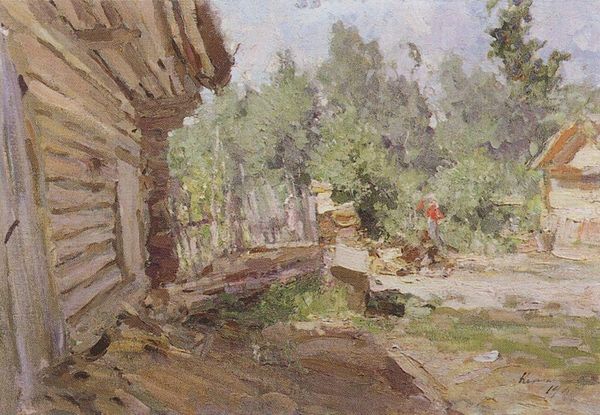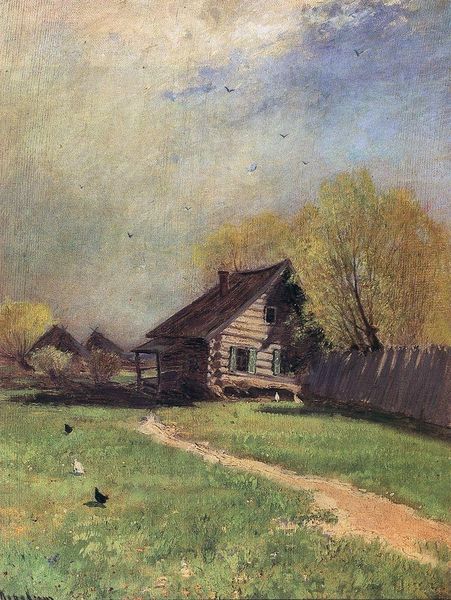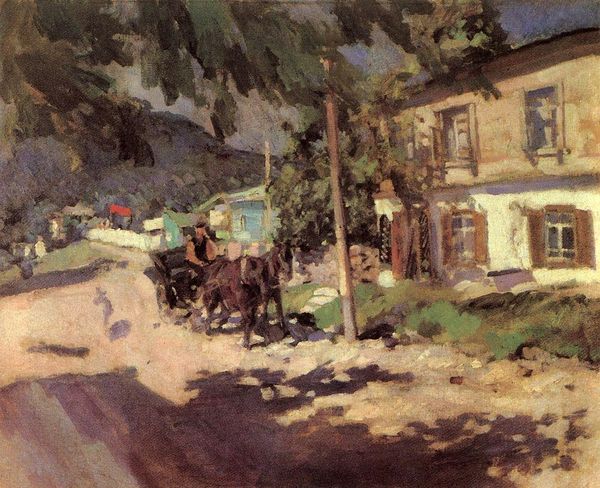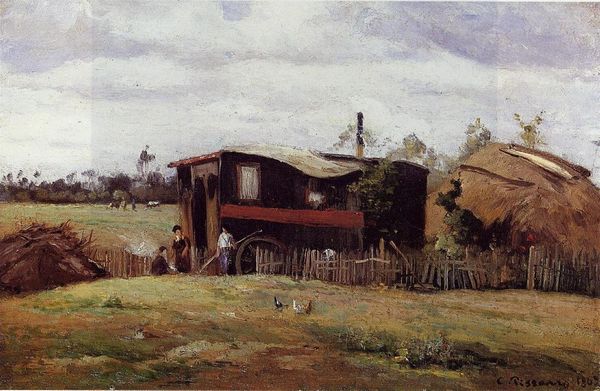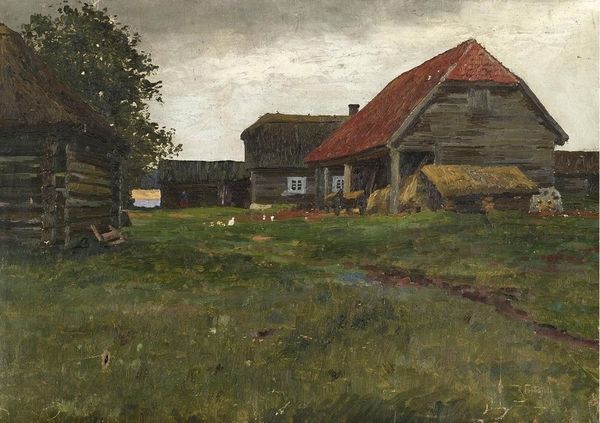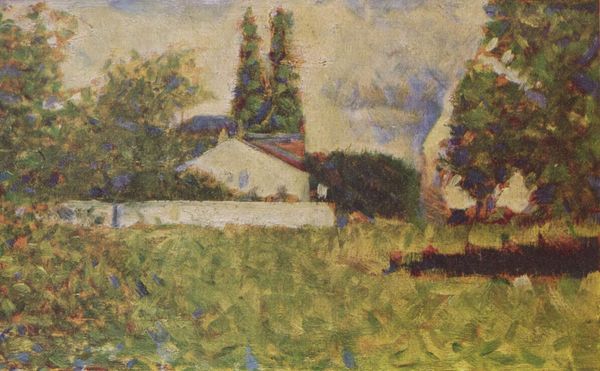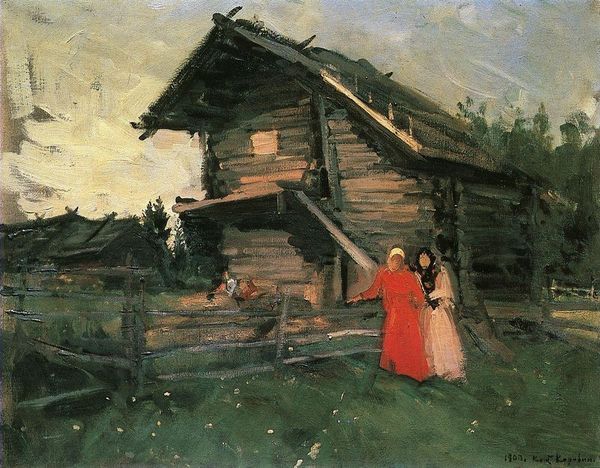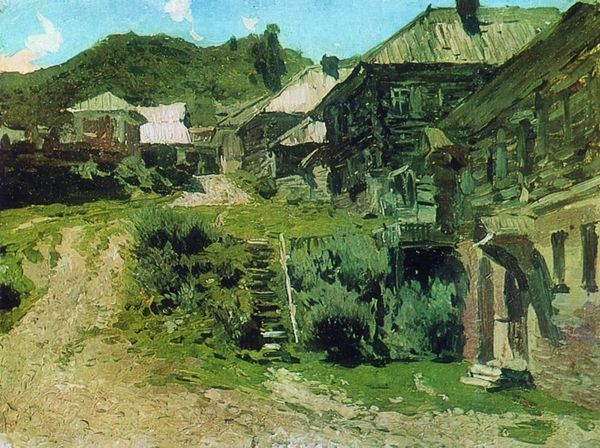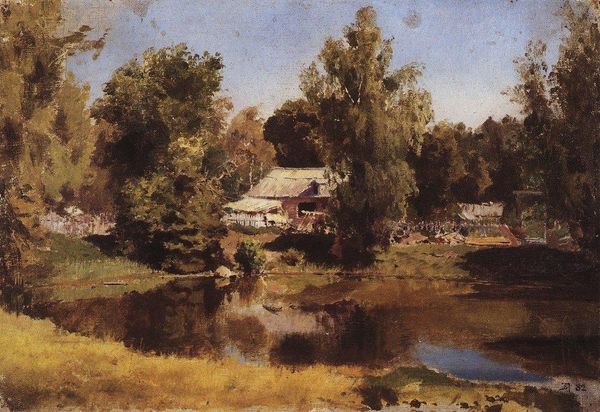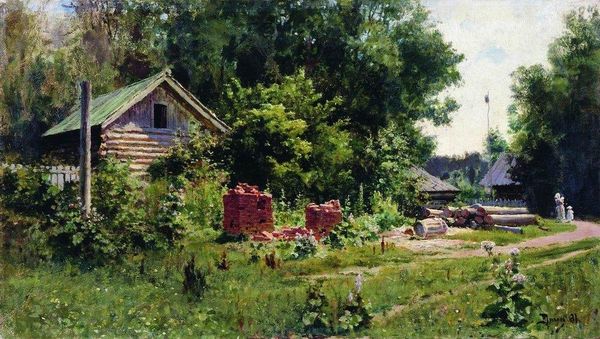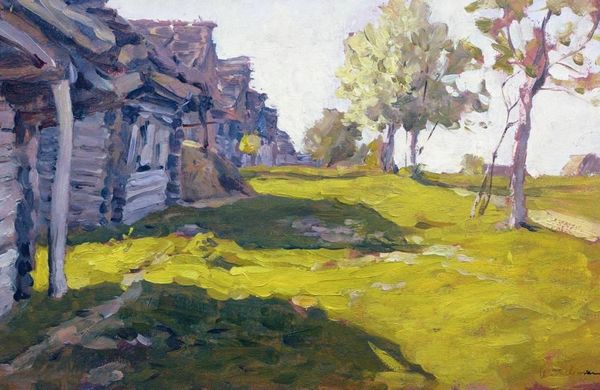
Copyright: Public domain
Konstantin Korovin’s painting captures a street corner in Pereslavl with oil on canvas. It presents a slice of provincial life in Russia. The scene is dominated by a wooden house, its weathered facade reflecting the quiet passage of time. A figure sits outside, seemingly absorbed in the rhythms of daily life. The loose brushwork and muted palette evoke a sense of melancholy. Painted in the late 19th century, the artwork speaks to the social conditions of a country undergoing vast change, from rural to industrial economies. Korovin belonged to a circle of artists associated with the Abramtsevo Colony. Savva Mamontov founded this artist colony, which sought to revive traditional Russian crafts and promote a national artistic identity. This image thus prompts questions about the role of art institutions. It encourages us to reconsider the value of the local, the traditional, and the everyday. To better understand this painting, historians examine the dynamics between urban and rural life, the politics of cultural identity, and the institutional forces shaping artistic expression at the turn of the 20th century in Russia.
Comments
No comments
Be the first to comment and join the conversation on the ultimate creative platform.

